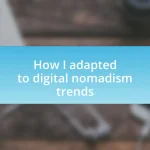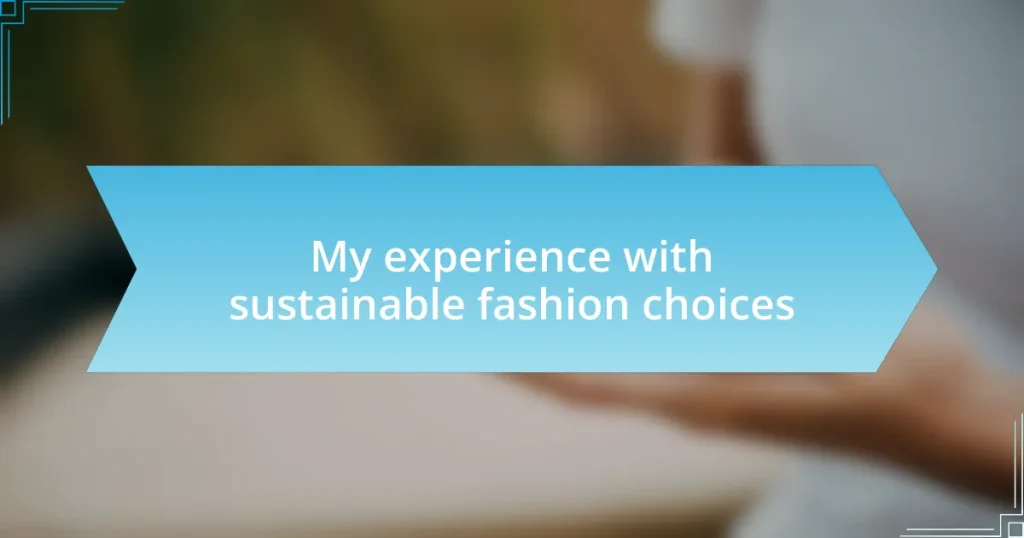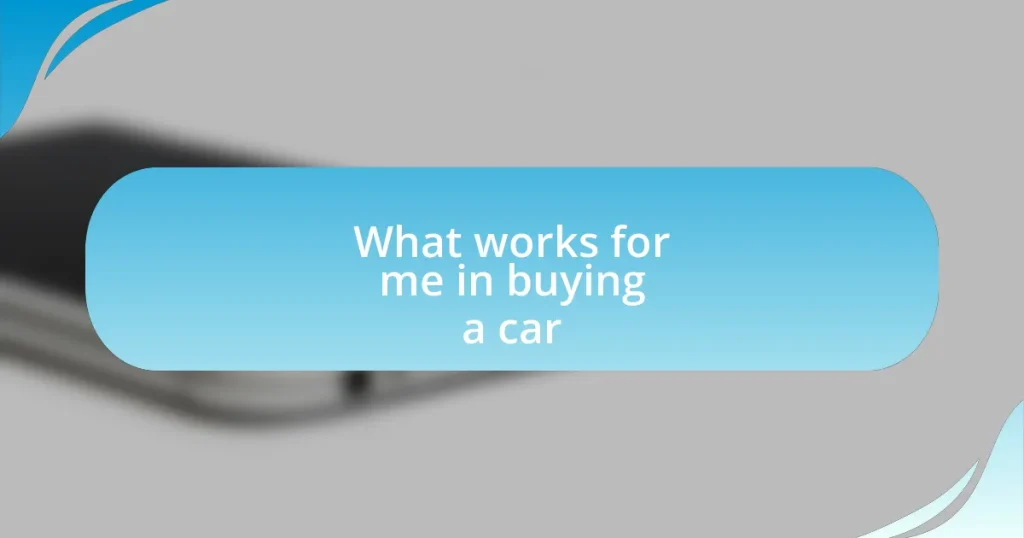Key takeaways:
- Realization of the environmental impact of fashion motivated a shift towards sustainable brands and practices.
- Embracing sustainable fashion fostered community connections through events like clothing swaps.
- Prioritizing eco-friendly materials deepened the understanding of clothing’s impact on the environment and local communities.
- Future trends include rental services and increased transparency in supply chains, enhancing sustainability in the fashion industry.
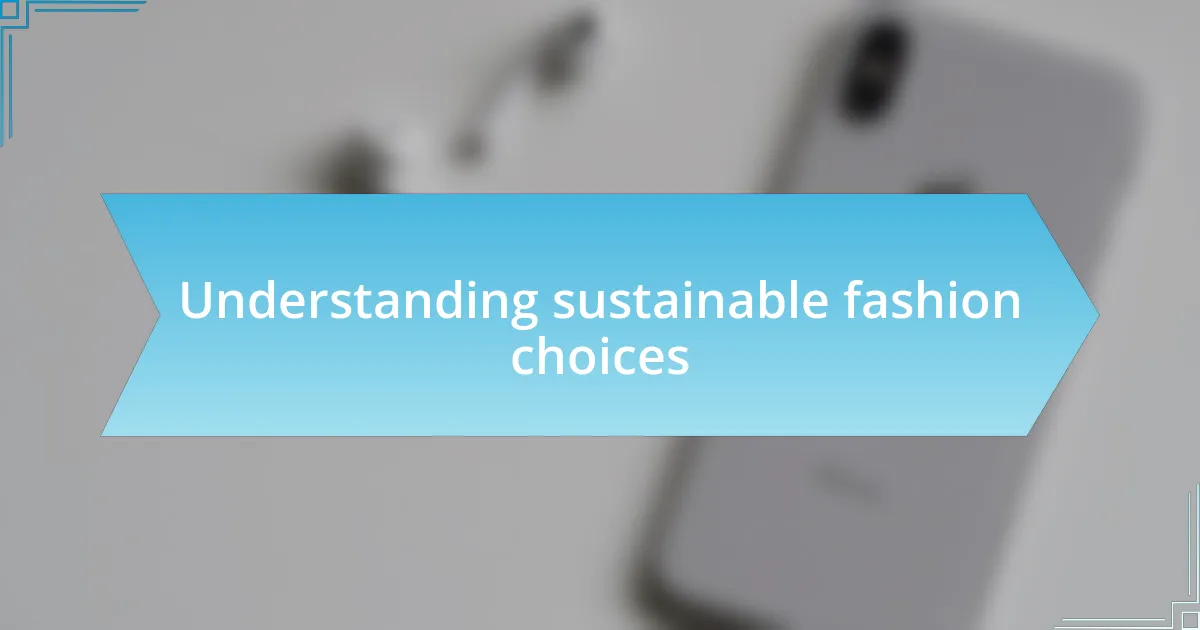
Understanding sustainable fashion choices
Sustainable fashion choices revolve around creating a more ethical and environmentally friendly way to approach clothing. For me, it started when I found myself feeling guilty every time I opened my overflowing closet. I wondered, how often do I really wear all these items? This introspection pushed me to reevaluate my purchasing habits and consider the impact my choices had on the planet.
When I first learned about the fashion industry’s environmental footprint, I was stunned. Did you know that it takes 2,700 liters of water to produce a single cotton shirt? That’s enough to hydrate a person for three years! These shocking statistics motivated me to shift toward brands that prioritize sustainability, leading me to discover beautiful pieces made from organic materials and recycled fabrics.
My journey into sustainable fashion has been filled with both challenges and rewards. I remember my first thrift store experience; the thrill of finding a unique, vintage piece was intoxicating! It made me realize that fashion doesn’t have to come at the expense of the environment. Engaging in this sustainable lifestyle inspired me to share my journey with others, sparking conversations about conscious consumerism and encouraging friends to think twice before hitting that “buy” button.
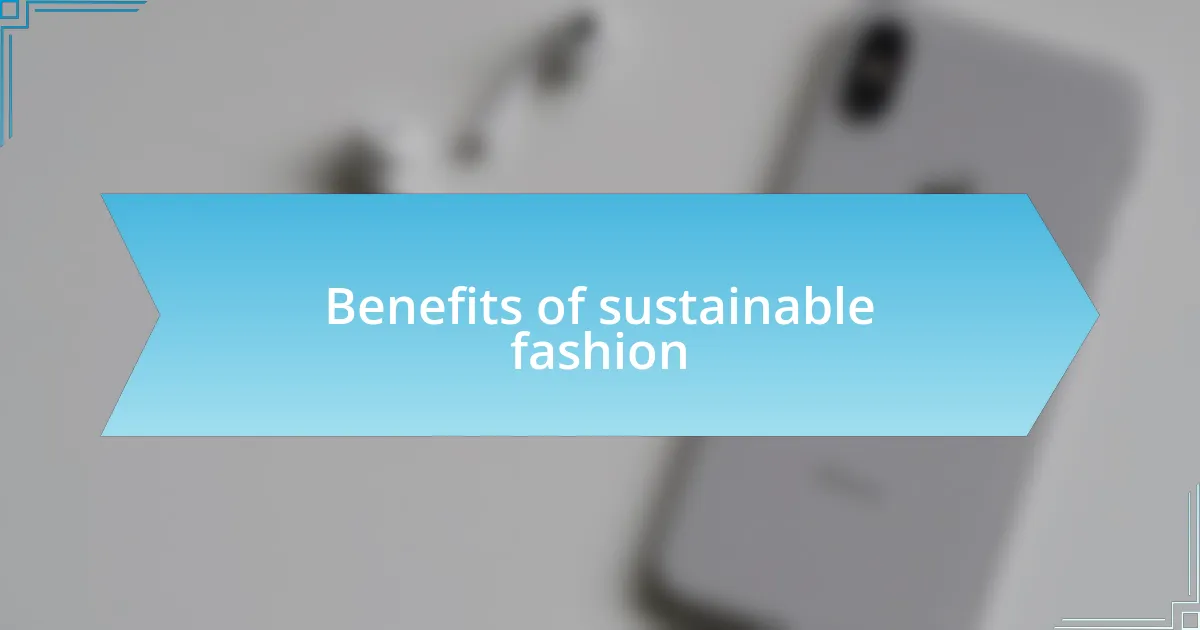
Benefits of sustainable fashion
Sustainable fashion offers numerous benefits that make it a worthwhile choice for consumers and the planet. One of the most impactful advantages is reduced environmental harm. When I switched to brands that employ eco-friendly materials, I noticed not only a decrease in my carbon footprint but also a sense of pride in knowing that my clothing choices support practices that protect our ecosystems.
Economically, embracing sustainable fashion can lead to significant savings in the long run. I learned this firsthand after making the leap to invest in quality pieces rather than fast fashion trends. The durability of ethically-made clothing means I buy less and wear my favorites longer. This shift not only lightens my wallet over time but also fosters a greater appreciation for the garments I own.
Moreover, sustainable fashion fosters community and creativity among consumers. I’ll never forget attending a local clothing swap event where I met like-minded individuals who share my passion for conscious consumption. It was refreshing to see the connection between fashion choices and the community—each piece exchanged told a story, creating a narrative that goes beyond just clothing.
| Benefits | Impact |
|---|---|
| Environmental Protection | Reduces carbon footprint and conserves natural resources |
| Cost Efficiency | Saves money over time through investment in durable pieces |
| Community Building | Encourages connections and stories through shared fashion experiences |
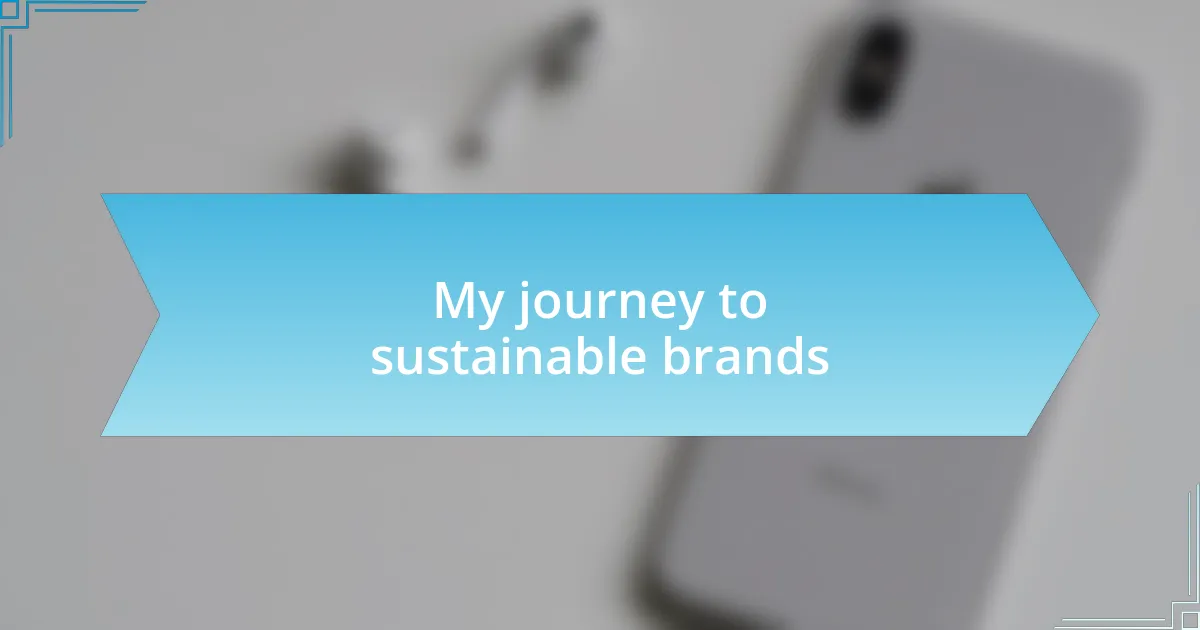
My journey to sustainable brands
Discovering sustainable brands was a gradual process for me. It started with a simple desire to find clothing that didn’t just look good but also aligned with my values. I remember stumbling upon a small ethical brand at a local market, where the founder passionately spoke about their mission to create fashion that doesn’t exploit workers or harm the environment. That conversation struck a chord with me, sparking my curiosity and commitment to exploring more sustainable options.
As I dove deeper into this new world, I found myself seeking out brands that prioritize transparency and ethical practices. The journey has been incredibly rewarding, and here are some of the key moments I experienced along the way:
- Attending workshops on sustainable fashion opened my eyes to the complexities of garment production.
- I began following brands on social media that highlight their eco-friendly practices and share stories of their artisans.
- Engaging with online communities dedicated to sustainable fashion helped me refine my choices and discover new brands.
- My wardrobe transformed into a curated collection that represents my values, rather than fleeting trends.
Each step reaffirmed my commitment to sustainable fashion, making the experience not only educational but also deeply fulfilling.
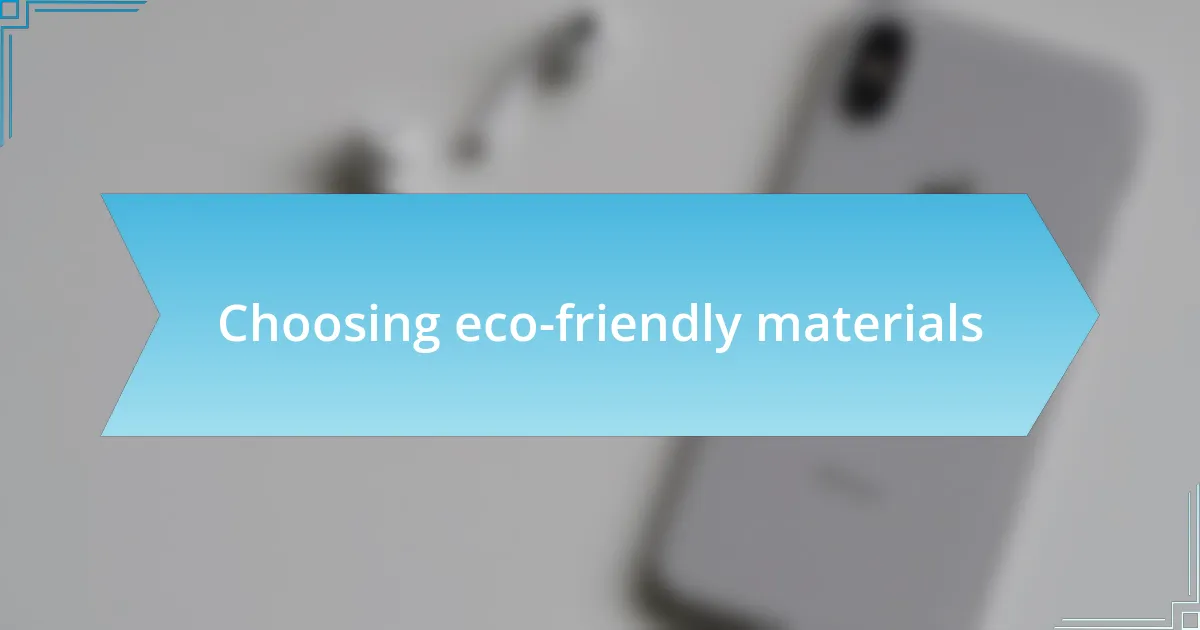
Choosing eco-friendly materials
Choosing eco-friendly materials can feel daunting at first, but I’ve learned it’s about understanding the options available. When I first started exploring sustainable fabrics, I didn’t realize how many choices I had. From organic cotton to Tencel, each material comes with its own story and environmental impact. Have you ever felt overwhelmed by these choices too? I know I have, but diving into each material’s benefits made the process much clearer for me.
I vividly remember the excitement of purchasing my first piece made from hemp. The texture was different, yet surprisingly soft, and it felt good to know I was supporting a crop that requires less water and no pesticides. This was a game-changer for me. Not only did I feel great wearing something that was kinder to the planet, but I found myself receiving compliments and curious questions from friends. Sharing the story of hemp’s sustainability became a conversation starter that I genuinely enjoyed.
As I continued my journey, I found that prioritizing eco-friendly materials didn’t just mean being conscious of fabric choices, but also being mindful of how the sourcing affects local communities. I often ask myself, “What impacts does my purchase have beyond just the fashion statement?” It’s a reflective process that has deepened my connection to the clothes I wear, making each piece in my wardrobe feel like a meaningful investment rather than a temporary trend.
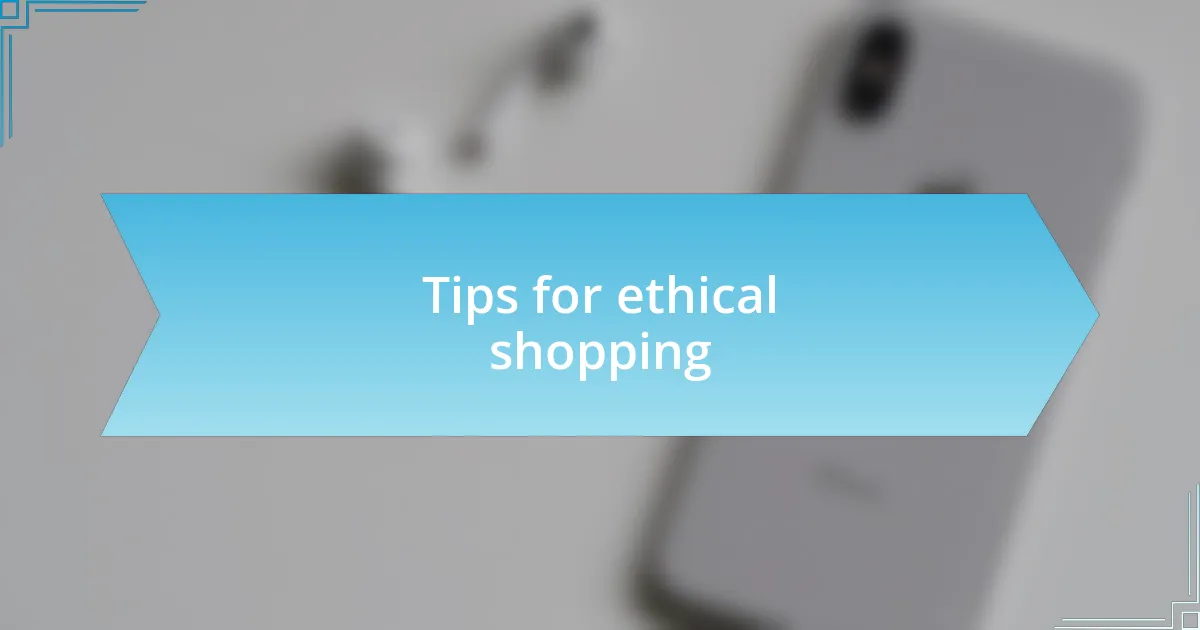
Tips for ethical shopping
When I first began my ethical shopping journey, I learned the importance of researching brands before making a purchase. I remember scrolling through different websites, and it struck me how many companies claim to be sustainable, yet only a few transparently share their practices. Have you ever been curious about a brand’s ethical standing? I make it a point to look for certifications or clear information about labor practices and materials. It’s comforting to know that my money is supporting companies with values aligned with mine.
I also started exploring second-hand shopping, and this has been one of the most rewarding experiences. I vividly recall the thrill of finding a vintage leather jacket in a local thrift store. It felt like a treasure hunt, and not only did I save money, but I also reduced demand for new resources. Each second-hand purchase tells a story, and I often think, “How many lives has this piece lived before it came to me?” This mindset shift has made shopping feel more like an adventure rather than a chore.
Lastly, I’ve adopted a strategy of mindful consumption by asking myself if I truly need something before buying it. This reflection has transformed my shopping habits; instead of impulse buys, I focus on quality over quantity. I remember eyeing a trendy dress sale, but instead of rushing, I paused to consider how often I’d wear it. After deliberation, I realized it wasn’t worth the purchase, and that felt empowering. Do you ever take a moment to reflect on your shopping needs? Practicing this has not only saved me money but also helped me curate a wardrobe that feels authentically “me.”
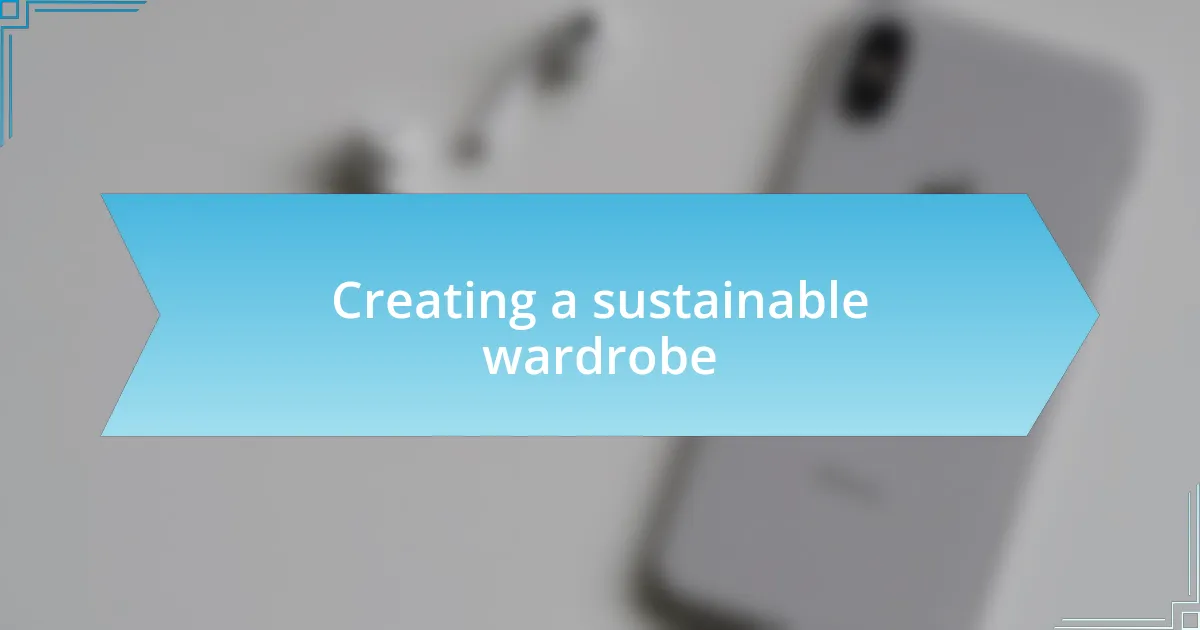
Creating a sustainable wardrobe
Creating a sustainable wardrobe requires a thoughtful approach to the pieces I choose to include. I started by defining my personal style, which helped me pinpoint what truly resonates with me. For instance, I realized I gravitate towards classic pieces that never go out of fashion, like a simple white shirt or well-fitted jeans. This focus not only streamlines my shopping but ensures I invest in items that I can wear for years.
I’ve also found immense joy in swapping clothes with friends. A few months ago, we organized a small gathering where we each brought items we no longer wore. It was like a mini fashion show, and in the end, I walked away with a gorgeous dress and a cozy sweater. It felt magical to breathe new life into pieces that others had cherished, and I often ask myself, “Why buy new when I can share and refresh my wardrobe with friends?”
Lastly, I’ve made it a habit to invest in accessories that complement my clothes. Quality shoes or a timeless handbag can elevate any outfit and add personality to my style. Each time I choose an accessory, I think about how it will fit into my existing wardrobe. Have you ever considered how a single statement piece can transform your entire look? This careful consideration not only sharpens my style but also amplifies the sustainability of my choices.
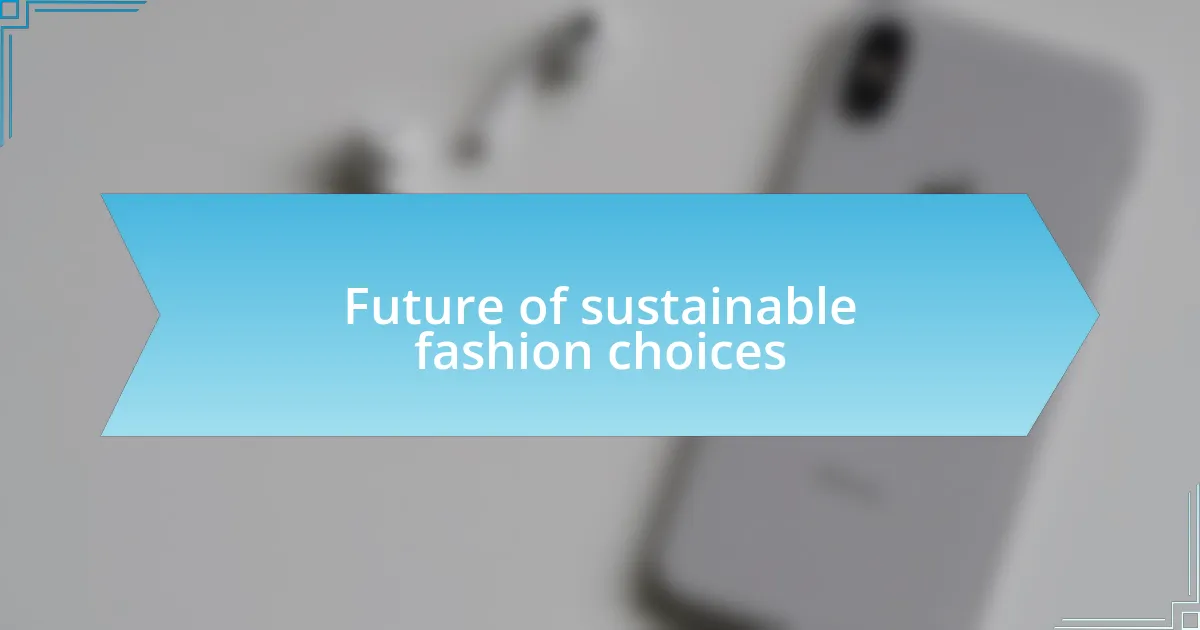
Future of sustainable fashion choices
Looking ahead, I envision a future where sustainable fashion becomes the norm, not the exception. As I explore innovative materials like mushroom leather or recycled plastic fabrics, it excites me to think about how these advancements could reshape our wardrobes. Wouldn’t it be wonderful if our clothes could make a positive impact on the planet?
One trend I’ve noticed is the rise of rental services. Last year, I borrowed a stunning gown for a wedding instead of purchasing it. The experience was liberating—it felt like I was borrowing joy rather than owning excess. This model not only reduces waste but also allows people to enjoy high-quality fashion without the long-term commitment. Have you tried renting outfits for special occasions? It’s a game-changer!
Additionally, I’ve become increasingly interested in brands that prioritize transparency in their supply chains. I recently discovered a company that shares detailed information about where their materials come from and how their workers are treated. This level of openness makes me feel good about my choices and instills trust. Isn’t it refreshing to support businesses that are genuinely committed to doing good? I believe that as consumers, we’ll demand more of these ethical practices, pushing the industry toward a truly sustainable future.









